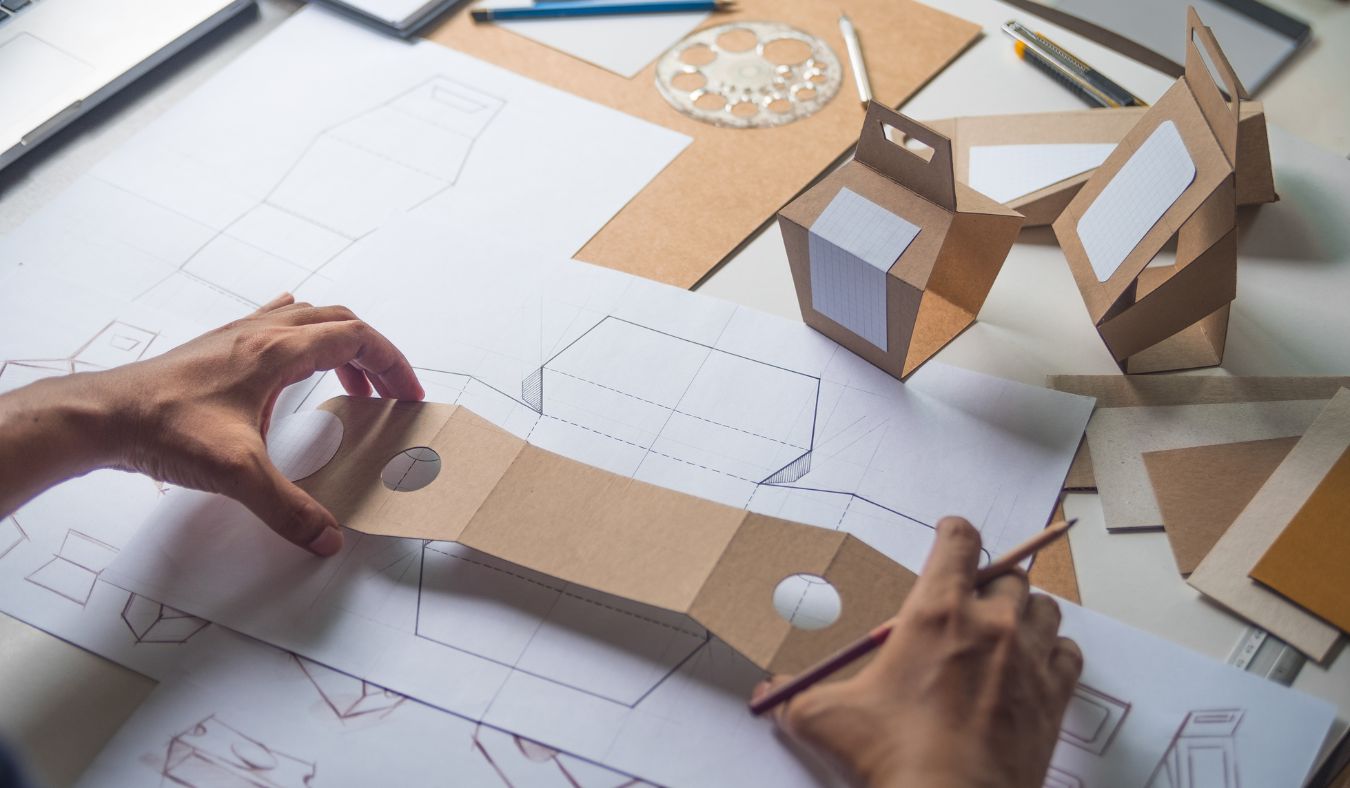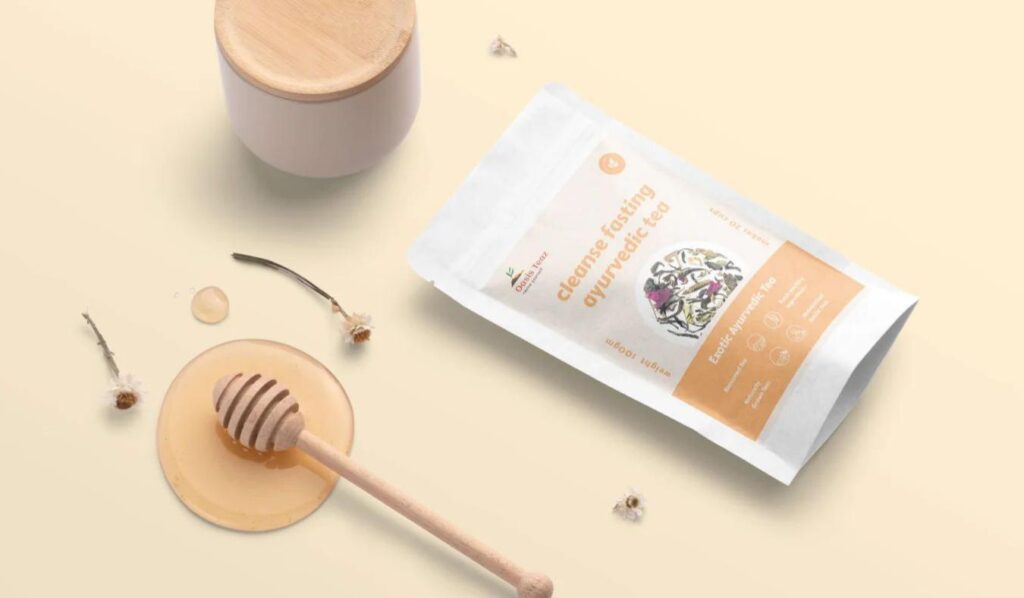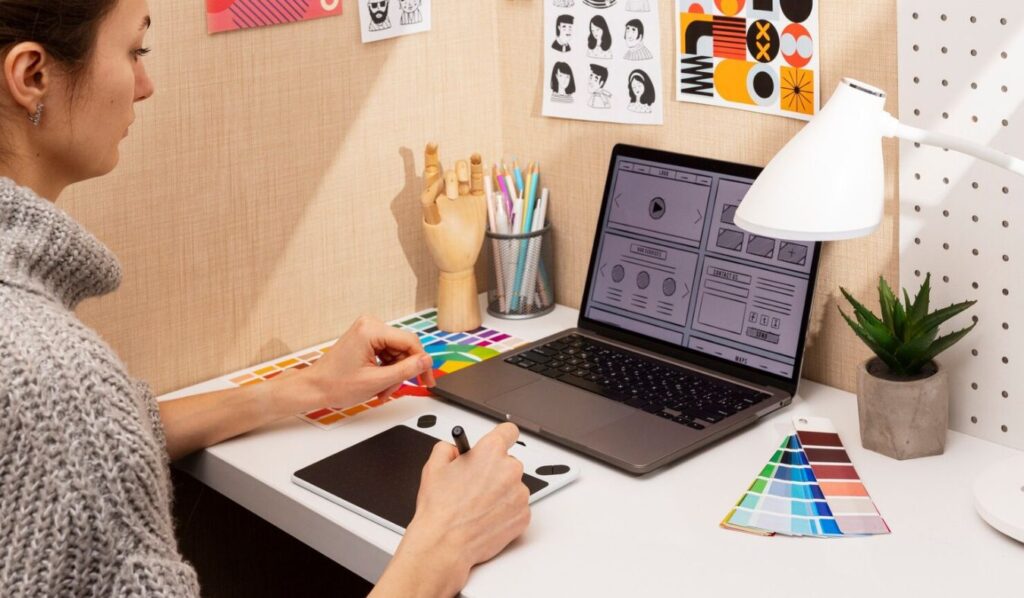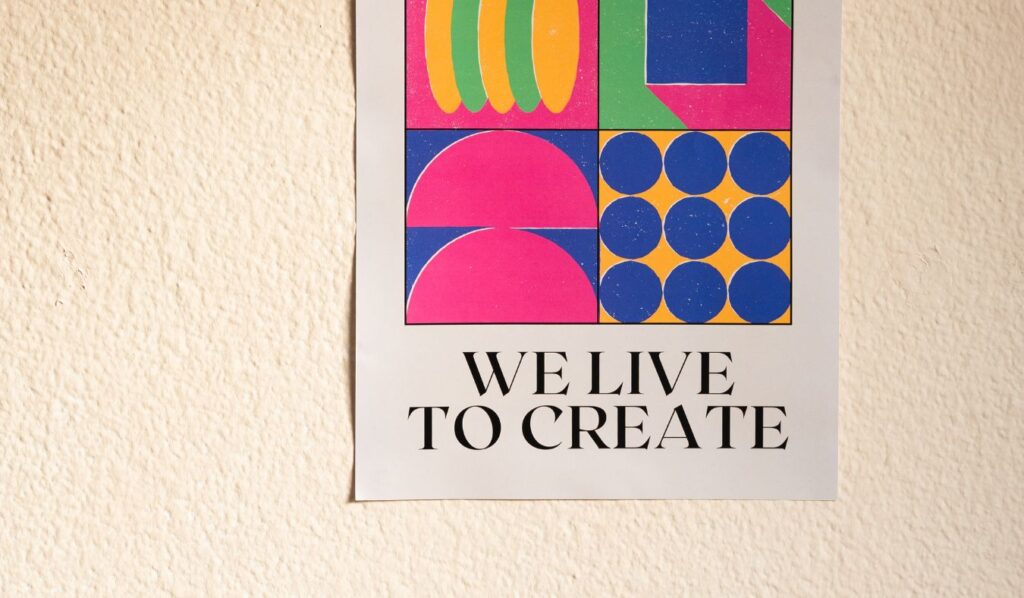Your product label is a silent salesperson. It has mere seconds to grab attention, communicate what you offer, and influence a potential customer’s decision to pick your item off the shelf (or click “add to cart” online).
First Impressions Matter : Your label is often the very first point of contact someone has with your brand. Before they read a rave review, try a sample, or experience your amazing customer service, they’re judging you based on that small rectangle of printed material.
More Than Looks : Great label design is the perfect blend of art and science. Yes, it should be visually appealing, but it also must:
- Clearly convey essential information about your product (name, ingredients, usage, etc.)
- Adhere to industry-specific legal regulations (this is non-negotiable!)
- Align with your overall brand personality and target audience
Competitive Advantage : In a crowded marketplace – whether that’s a physical store shelf or a crowded search results page – a standout label can be the difference between your product getting overlooked or excitedly tossed into a shopping basket.
Ready to learn how to design labels that sell? Let’s dive in!
1. What is a Label?
A label is a piece of paper, plastic, fabric, or other material affixed to a product’s packaging. Its primary purposes are:
- Identification: Clearly conveys what the product is, who makes it, and other key information.
- Compliance: Displays legally required information (ingredients, certifications, warnings, etc.).
- Marketing: Influences purchasing decisions through design, persuasive language, and brand presentation.
2. What is Label Design?
The Art & Science of Persuasion: Label design involves the strategic selection and arrangement of visual and textual elements to achieve the goals mentioned above. Great label design considers:
- Aesthetics: Color, typography, imagery, shape, and overall layout that attracts attention and aligns with the desired brand image.
- Functionality: Material choice, readability, and how the label interacts with the packaging itself.
- Psychology: How colors, words, and visuals tap into consumer desires and emotions.
3. Types of Label Designs
Labels serve different purposes, and understanding the types helps you choose the right combination for your product. Here’s a breakdown of the most common:
Brand Label Design:
The star of the show, the brand label is all about creating instant brand recognition. It prominently features your logo, brand name, and perhaps a tagline or key visual. Ideally, the design choices on this label – color palette, imagery, typography – all embody the core essence of your brand personality. Think of it as a mini billboard for your product; it should spark a memory or positive association with your brand in the customer’s mind.
Descriptive Label Designs:
Provides essential factual information about the product that allows consumers to make informed decisions. This includes details like
- Ingredients (for food products),
- Materials (for clothing),
- Functions (for electronics),
- Net weight or volume,
- Dimensions (especially important for furniture or bulky items),
- Usage Instructions,
- Dosage Information (for medications),
- Allergen Warnings,
- Care Instructions (for washable items),
- Country of Origin,
- Certifications (organic, fair trade, etc.),
- Contact Information for the manufacturer, and any other details mandated by regulatory bodies.
Informative Label Designs:
Expands on the basic product description, often with a persuasive angle, to highlight why a customer should choose this particular brand. It might include benefits of the product, going beyond a simple list of features to showcase how those features solve a customer’s pain points.
For example, a laundry detergent might list its stain-fighting enzymes, but an informative label would explain how those enzymes ensure cleaner, brighter clothes for families with messy kids.
Grade Label Designs:
Indicates the quality or classification level of a product, most commonly seen in the food industry (Grade A eggs, USDA Choice beef). These labels are typically established by industry standards organizations or government regulatory bodies to ensure consistency and quality across products. For example, the USDA (United States Department of Agriculture) grades beef based on factors like marbling (fat content and distribution) and maturity of the animal.
This grading system helps both producers and consumers: producers can command a higher price for higher-graded meat, and consumers can have some assurance of the quality they’re getting for their money.
Promotional Label Designs:
Designed to create a sense of urgency or excitement, promotional labels highlight limited-time offers, contests, or special product tie-ins. Common examples include “Limited Edition” to signal exclusivity, “Save 20%” for clear discount messaging, or “New & Improved!” to pique interest in product reformulations or upgrades.
Promotional labels can also be used to announce contests or sweepstakes with instructions on how to participate, or to highlight partnerships with other brands or celebrities. The key is to use clear, concise language and eye-catching visuals to grab attention and encourage customers to take advantage of the special offer.
Persuasive Label Designs:
Uses design elements and language aimed at evoking emotion or tapping into consumer desires. This can be achieved through visuals (nostalgic black and white photos for a vintage feel, a lush forest scene to promote eco-friendly practices) or specific word choices that trigger positive associations.
Words like “natural,” “handcrafted,” “artisanal,” or “healthy” all play on a desire for authenticity and quality, especially in the food and beverage industry. Luxury brands might use words like “exclusive,” “bespoke,” or “limited edition” to create a sense of prestige and desirability. Humor can also be a persuasive tool, depending on your brand and target audience. A playful or witty label can grab attention and make your product more memorable.
Additional Considerations:
- Size & Shape: Dictated by the packaging, must work in concert with the other labels you need.
- Material: Paper, vinyl, etc. Impacts durability and cost.
- Secondary Labels: Any additional labels needed on other sides of the product for more complex information.
Important: Most products use a combination of these label types to meet both practical and marketing needs.
4. Benefits of a Well-Designed Label
Think of label design as an investment, not just an expense. When done strategically, the benefits extend far beyond making your product look pretty:
Increased Brand Recognition: A consistent, eye-catching label makes your products instantly recognizable. This builds familiarity and trust over time.
Improved Product Differentiation: On crowded shelves, a unique label design helps you stand out from the sea of sameness, especially against competitors with generic-looking packaging.
Enhanced Perceived Value: A high-quality label subconsciously signals to potential buyers that your product is also high-quality, even if the price tag is the same as something less polished.
Boosted Sales: When a label successfully captures attention, piques curiosity, and clearly communicates what you offer, it’s far more likely to convert browsers into paying customers.
Customer Loyalty: A thoughtfully designed label is part of the overall positive experience with your brand. This fosters repeat purchases and word-of-mouth recommendations.
Compliance: While not the most exciting benefit, a label that includes all legally required information protects your business from fines or product recalls.
5. Key Elements of Effective Label Design
While every product label is unique, strong designs masterfully leverage these key elements:
Logo
- Placement: Prominent, but doesn’t have to always be centered. Asymmetry can be modern and eye-catching.
- Sizing: Must be legible, with enough space around it to not feel cramped.
- Variations: Consider if you need a simplified version for very small labels, or a black-and-white one for certain printing uses.
Typography
- Readability: Never sacrifice clarity for style. At a glance, the product name and key info should be obvious.
- Hierarchy: Use font size and weight differences to guide the eye to the most important info first.
- Brand Personality: Serifs feel traditional, sans-serifs modern, playful scripts suit specific niches… Your font choices should support your overall brand vibe.
Color
- Psychology: Understand how color influences perception (red evokes urgency, blue is calming, etc.). Research color associations within your market.
- Contrast: Ensure text is readable against the background. Accessibility matters!
- Printing Costs: Complex gradients, metallics, etc., may be stunning but drive up production costs significantly.
Imagery
- Photos: High-resolution, well-lit product shots are key if using photography.
- Illustrations: Can add personality, especially good for brands targeting a creative audience.
- Patterns: Abstract patterns offer visual interest but shouldn’t overwhelm the core information.
- When NOT to use: Sometimes bold color blocks or negative space are more impactful than forced imagery.
Shape & Size
- Works with the Packaging: The label must complement the container’s shape, enhancing it not fighting it.
- Practicality: A circular label on a square bottle can be tricky to apply without wrinkles.
- Stand Out Factor: Unusual shapes attract attention but may significantly increase costs or limit your packaging choices.
Important: Label design should be done in tandem with choosing your product’s actual packaging, not as an afterthought!
6. Practical Considerations
Brilliant design is only half the battle. These factors will directly impact the feasibility, cost, and success of your label:
Material Matters
- Durability: Must withstand how your product is stored and used. Bathroom = moisture resistant. Outdoor gear = abrasion resistant.
- Finish: Glossy adds pop, but fingerprints show easily. Matte is modern but can be less vibrant. Textured options exist too!
- Sustainability: A growing concern for many customers. Recyclable, compostable, or minimal materials have marketing appeal.
Printing Methods
- Digital: Good for small runs, quick turnaround, and variable data (unique barcodes per item). Can be less cost-effective at huge volumes.
- Flexographic: The industry standard for large quantities, a wider range of materials and finishes. Higher upfront cost (plate creation).
- Other: Screen printing, letterpress, etc., for speciality looks often with a handcrafted emphasis – pricey but unique.
Legal Requirements
- Sadly, Not Optional Ignoring these puts your business at risk. Varies wildly by:
- Product Type: Food has stricter labelling laws than a candle, for example.
- Location: Different countries have their own rules.
- Where to Start:
- Government websites (FDA in the US, etc.) relevant to your industry.
- Competitor Analysis: Carefully examining how similar products are labelled is a smart start, but doesn’t replace doing your own due diligence.
Target Audience Alignment
- It’s Not About You: Your favourite colour might be neon green, but if your ideal customer is a luxury hotel chain, that’s a mismatch.
- Market Research: Understanding the aesthetic preferences, age demographics, etc., of your target buyer is essential for a label to resonate.
- Empathy is Key: What questions are they likely to have while quickly scanning the product? Your label should answer them.
7. Design Inspiration & Resources
Sometimes seeing what works (and what doesn’t) is the best way to spark your own creativity or refine your design brief.
Showcase Examples
- The Good, The Bad, & The Ugly: Curate examples of label designs across industries. Analyze why they succeed or fail in terms of the elements covered earlier.
- Niche Focus: Provides more relevant inspiration for readers to say, “Ah, THAT could work for my type of product.”
- Source: Pinterest, packaging design award sites, even browse store shelves with a critical eye!
Free Design Tools
- Canva & Alternatives: Great starting point for DIY, especially with their templates.
- Limitations: Lack of customization for unique shapes, colour matching for printing can be off, and generic look if you don’t personalize heavily.
Template Sites
- Where to Find: GraphicRiver, Creative Market, and similar platforms offer label templates specifically.
- Pros & Cons: Faster and cheaper than fully custom design, but still requires some design software knowledge. Risk of your label looking too similar to others.
Finding a Designer
- Freelancer vs. Agency: Budget, project complexity, and need for ongoing work all factor into this decision.
- What to Look For:
- Portfolio with strong label design samples in your niche (ideally).
- Client testimonials
- Communication style is a good fit for you
- Where to Start: Freelancing platforms, industry-specific job boards, or referrals.
Important: Even if using DIY tools or templates, having a designer review your final work before ordering a large print run can save you costly mistakes!
8. Beyond the Label: Packaging as a Whole
Your label doesn’t exist in a vacuum. Great packaging design takes a holistic approach to creating a memorable experience for the customer.
Cohesive Experience
- Does the label’s colour palette and style choices complement the actual product container? Dissonance is jarring.
- Consider the full picture: If your box has bold typography, maybe the label itself needs visual breathing room.
Unboxing Factor
- E-commerce boom makes this vital! The label is the first thing seen when the shipping box is opened.
- Even small touches matter: A branded sticker sealing tissue paper, or your logo subtly printed INSIDE the box.
Shelf Impact
- Imagine your product lined up next to competitors in a store. Does it pop in a good way, or fade into the background?
- Consider size, shape, AND how the label interacts with the store’s lighting (too glossy can cause unreadable glare).
Thinking Beyond the Product Itself
- Product Photography: Lifestyle images for your website or ads should feature the label prominently as part of the story you tell about your brand.
- Social Media: User-generated content often includes the packaging – is yours interesting enough to be shared?
Getting Started
Ready to turn your label design vision into reality? Make sure you don’t miss a single important detail! by following our guide.
Need More Personalized Help?
Designing an effective label takes both strategic thinking and an eye for detail. If you’d like expert support with your label design (or overall packaging), feel free to contact Brand Sewa for a Free Label Design Consultation.
Let’s work together to create a label that elevates your brand and drives sales!



